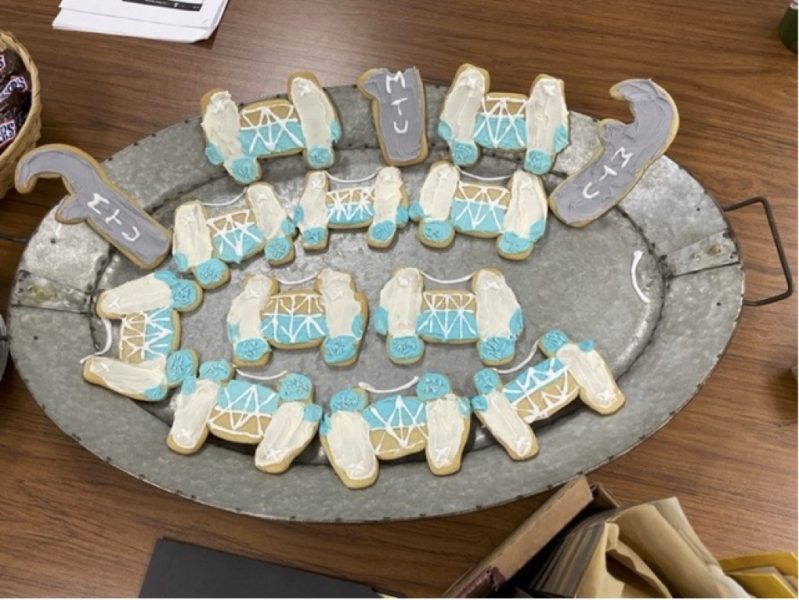
The second annual Zachary Richard Podkul Memorial Scholarship Challenge at Michigan Tech has come to its (delicious) completion.
Students in the Department of Manufacturing and Mechanical Engineering Technology set out to design a cookie cutter, one that the department could send out to prospective students, employers and alumni. Students were also required to provide an NX CAD assembly model of the process used to manufacture the cookie cutter.
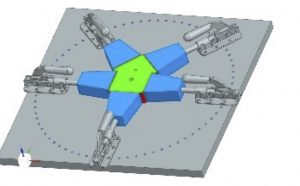
If you ever wondered how cookie cutters are made, just take a look at this YouTube video, which helped serve as the inspiration for the challenge. The sponsors, Richard and Cathy Podkul, wanted to honor their late son Zachary with a design contest that incorporated his passions for both cooking and machine design. The contest was announced in late fall semester, and students began their thought process on what to design.
During the spring semester, sophomore mechanical engineering technology (MET) students enroll in a parametric 3D CAD modeling course that teaches how to use Siemens NX CAD modeling software. Many of the students enrolled in this parametric modeling course submitted entries for the cookie cutter contest.
To help get them started, students were provided with a 3D CAD assembly model as a guide for size and configuration. Later this design was substituted with a wrench shape to use as a prototype—something that could be used by students to test and see how the cookie cutter assembly operates prior to submitting their own entries.
MMET machine shop student workers—with assistance from Master Machinist Scott Meneguzzo and Operations/Facilities Supervisor Nick Hendrickson—produced a working model of the cookie cutter manufacturing fixture. After two design iterations of the 3D printed pushers connected to the clamps, the first, successful wrench-shaped “test” cookie cutter was produced.
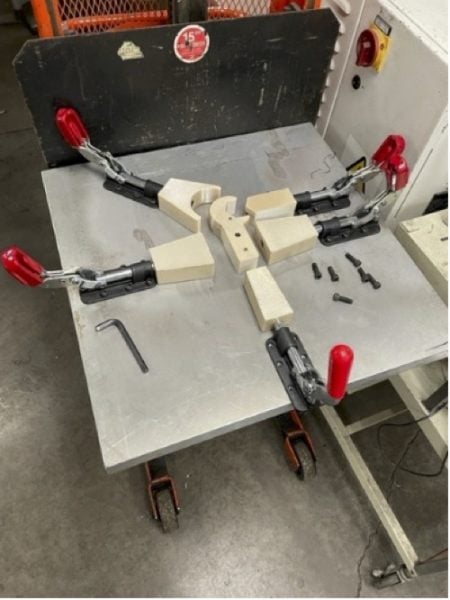
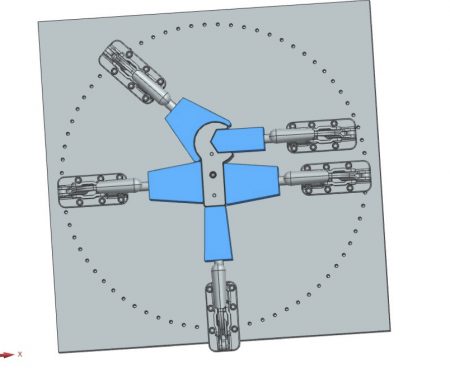
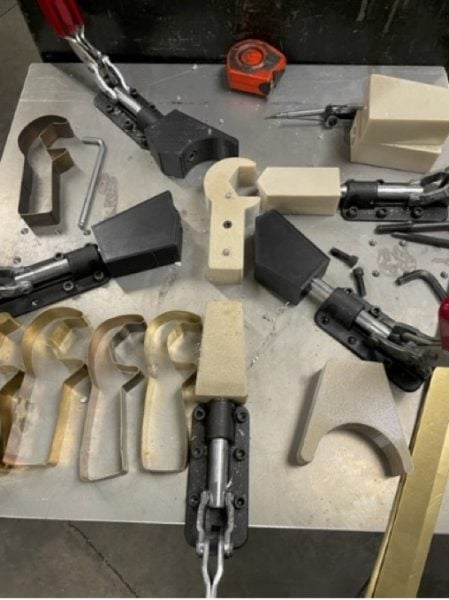
The material used for the cutter is a thin strip of brass, cut to the precise circumference of the cutter outline. It is then formed into a hoop, spot welded together, and tempered for formability. Each clamp is manually operated and each has a 2,500 pound holding force. The cookie cutter form in the center was 3D printed on the Fortus 400MC Stratasys 3D Printer, located in the MMET department’s Polymeric Additive Manufacturing Facility
Many interesting cookie cutters designs were evaluated by the contest judges for the following qualities: 1) Parametric—3D CAD model(s) utilizes sketches fully constrained with parametric features and fully constrained parts in the assembly; 2) Originality—a unique and innovative design; 3) Optimized—minimized use of material, while not compromising strength; 4) Manufacturability—the part’s ability to be easily formed in manufacturing fixture; and finally 5) Ease of use—the manufacturing design is ergonomic and simple to use.
The results? Three students tied for second place in the contest. They were Ben Engle, who designed a gear-shaped cookie cutter; Luz Aparicio, who designed a lightbulb, and Patrick Moeller, who designed a Lift Bridge cookie cutter.
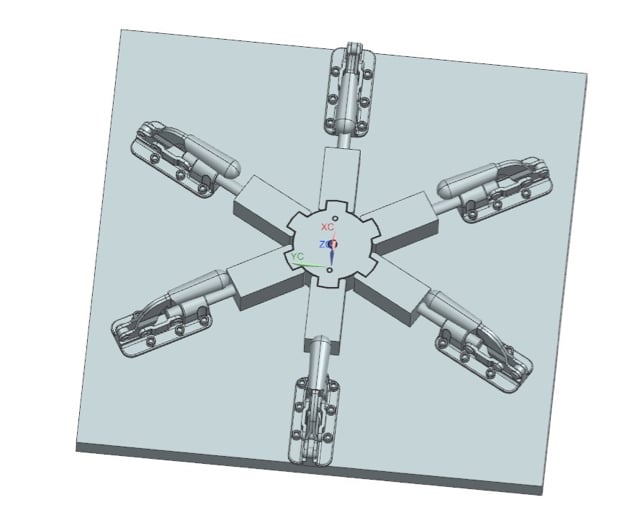


In the end, the contest yielded the first-place winning cookie cutter, Hunter Wilke’s design, also in the shape of the Portage Lift Bridge.
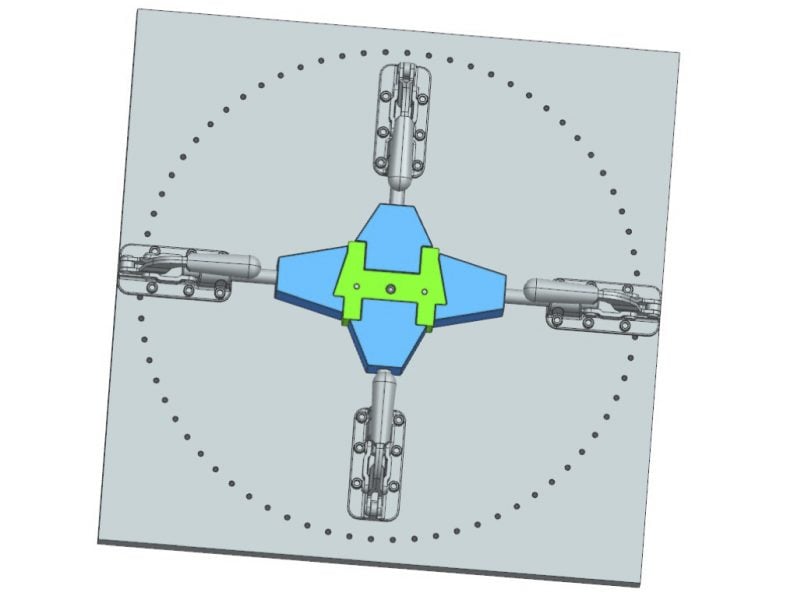
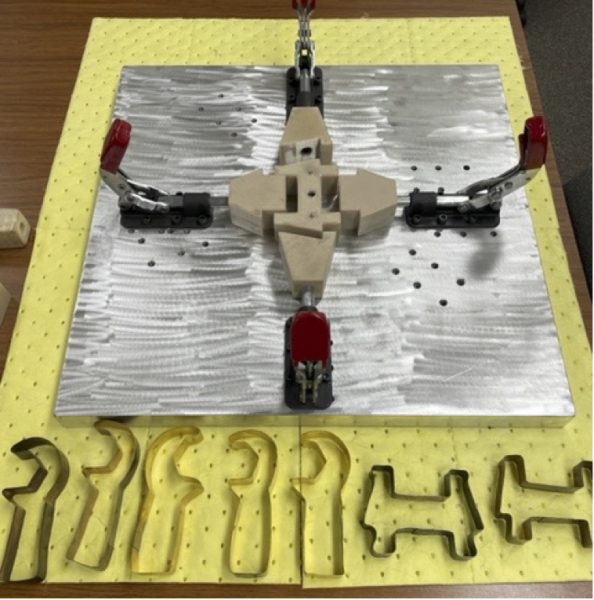
All the winners were presented certificates at an awards ceremony on April 19, which was the celebration of Zachary’s birthday.
The next challenge for the Podkuls, together with Michigan Tech MMET department faculty, will be to develop an idea for the 3rd Annual ZRP Memorial Scholarship! With Zachary’s love of cooking, the outdoors and nature, writing, poetry, and his curiosity for discovering how things worked, it could be just about anything!
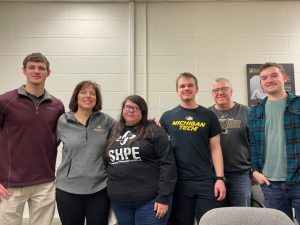
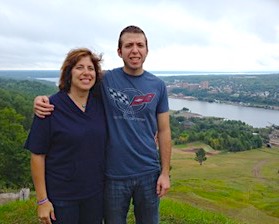
Richard T. and Catherine F. Podkul established an endowed scholarship in honor of their son, Zachary Richard Podkul ’18. Zach earned a BS in Mechanical Engineering Technology at Michigan Tech. He suffered from Crohn’s disease, and died in 2020 at age 25. Thankfully, Zachary’s wonderful legacy lives on here at Michigan Tech, now and always.